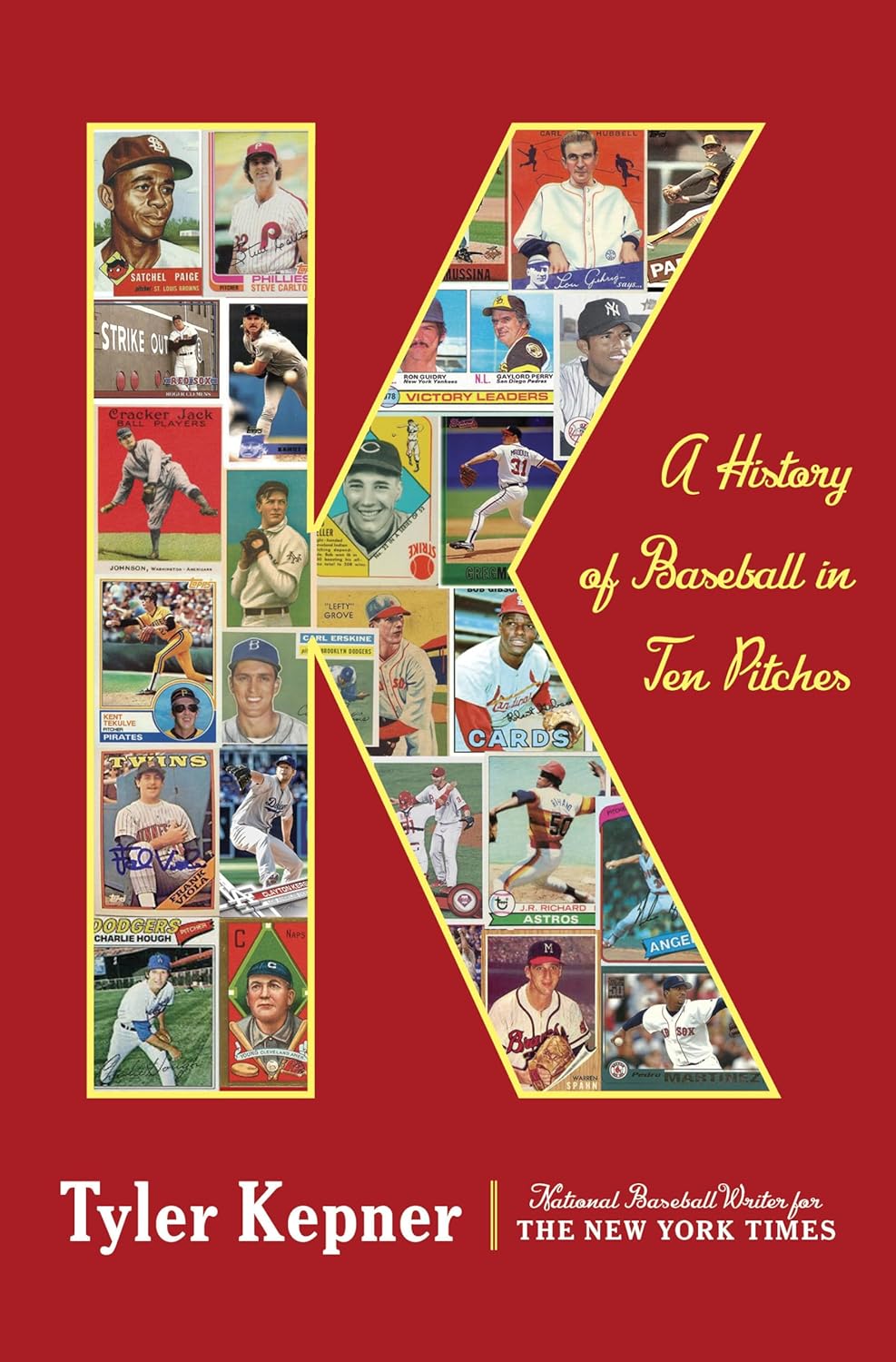
Armchair travel around the world!
Start your reading adventures with our FREE Reading Atlas.

- Around the World in 14 Books
- 7 Thrilling Book Series
- 6 Audiobooks That Are Like Theater For Your Ears



This exploration of knuckleballs and more (320 pages) was published in April of 2019 by Doubleday. The book takes you to the pitcher's mound. David read K and loved it; it wouldn't be on our site if he didn't recommend it.
Bookshop.org is an online bookstore with a mission to financially support independent bookstores and give back to the book community.

If you think a major league pitcher is just ‘throwing a ball,’ this riveting, delightful book will disabuse you of that notion.
The very first step in major league pitching seems relatively straightforward: Throw a baseball 60 feet, 6 inches — that’s a little longer than a bowling lane — straight through a batter’s strike zone.
The next consideration is speed. In the majors, even the so-called ‘slow’ pitches arrive at the plate in the low 80-mph range. At the other extreme, some pitchers regularly break triple digits. A 100-mph fastball reaches home in less than four-tenths of a second. Blink, and it’s over.
But major-league pitching isn’t just about throwing hard and fast. It’s about control and deception. It’s about out-thinking some of the best hitters in the world.
When a pitcher’s locked in, he’s not just throwing a ball. He’s managing the batter’s expectations, then breaking them. It’s a combination of athleticism, psychology, and sleight of hand. And a pitcher is doing this feat with thousands watching and the game on the line.
When it all comes together, you witness one of the most precise and demanding performances in sports.
There are ten major pitches in baseball — the fastball, the cutter, the curveball, the knuckleball, and so on. Each of them gets its own chapter: a definition, history, and, most delightful, the stories of the players who threw them the best.
The author Tyler Kepner was the baseball columnist for The New York Times for more than two decades. He knows baseball. He weaves together historical context, quirky character studies, and a sense of wonder in an easy, conversational style.
One of the takeaways from this book is how much of pitching is about teaching, reinvention, and passing knowledge along. Again and again, Kepner tells stories of players helping each other: a quiet question in the clubhouse leads to a game of catch outside, off-the-cuff conversations change careers. The art and science of pitching is a dialogue that continues across generations of ballplayers.
The chapter on the knuckleball is a stand-out. This pitch is meant to leave the pitcher’s hand with no spin. Without spin, the ball dances on the way to the plate, swerving unpredictably as it catches small pockets of air. The result? Nobody — not the pitcher, not the batter, not even the catcher —has any idea where it will end up. It’s a nightmare for hitters, but it’s no picnic for catchers, either. One catcher who worked with a knuckleballer described catching 10 to 12 balls a game in the chest, routinely ending the game with ball-sized bruises. The knuckleball doesn’t see much use today, in part because it takes ages to perfect.
This book takes you inside baseball in a way that feels both meaningful and fun — and it will change the way you think about tossing a ball to a pal on the lawn.
By then, a new pitching star had just begun to emerge: Denton True Young, known as Cy for a wheeling, cyclone-like delivery in which he hid the ball from the hitter. Big for his time — 6 foot 2, 210 pounds — he set nearly every longevity record with a disciplined lifestyle forged on a farm in Ohio as a boy. As he wrote in Sporting Life in 1908: ‘A man who is not willing to work from dewy morn until weary eve should not think about becoming a pitcher.’
That quote is not inscribed on his annual award for pitching excellence, but maybe it should be. In any case, while Young did not specialize in strikeouts — he ranks first in innings pitched but twenty-first in strikeouts — he understood which pitch was most important. ‘My favorite pitch,’ he said, ‘was a whistler right under the chin.’ — Tyler Kepner
Wanna help us spread the word? If you like this page, please share with your friends.
Strong Sense of Place is a website and podcast dedicated to literary travel and books we love. Reading good books increases empathy. Empathy is good for all of us and the amazing world we inhabit.
Strong Sense of Place is a listener-supported podcast. If you like the work we do, you can help make it happen by joining our Patreon! That'll unlock bonus content for you, too — including Mel's secret book reviews and Dave's behind-the-scenes notes for the latest Two Truths and a Lie.
Join our Substack to get our FREE newsletter with podcast updates and behind-the-scenes info — and join in fun chats about books and travel with other lovely readers.

We'll share enough detail to help you decide if a book is for you, but we'll never ruin plot twists or give away the ending.
Content on this site is ©2025 by Smudge Publishing, unless otherwise noted. Peace be with you, person who reads the small type.